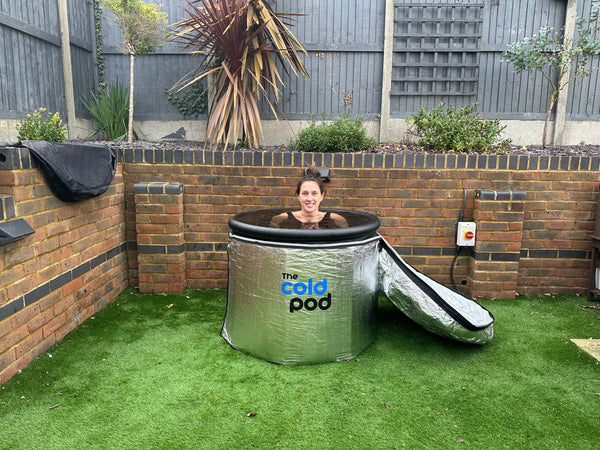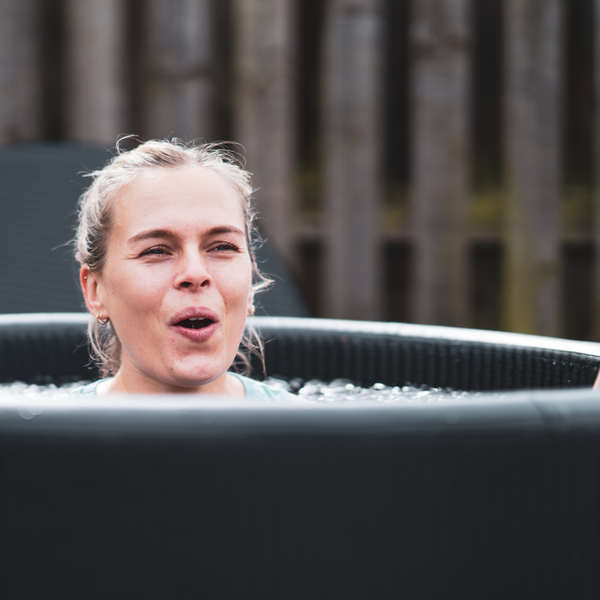Cold water therapy, whether accessed through cold water swimming or ice bathing, is not only a thrill but may also be therapeutic. It’s generally thought that the ideal temperature for The Cold Pod is between 10 and 15oC or 50 to 59oF, but these temperatures may vary based on your circumstances.
If you’re an avid open water swimmer there’s every chance that these temperatures may be lower. But less isn’t always necessarily more. Here, we’ll look at some of the risks involved in cold water exposure and what happens to the body.
Cold water risks
As with anything in life, being exposed to cold water carries risks.
In the UK, the average temperature of the sea ranges between 6 and 10oC in the winter and 15 and 20oC in the summer, depending on where you are (RYA, 2024). While the average temperature coming from the cold tap is between 10 and 20oC (Wild, 2022).
So, you may be exposed to temperatures below those that have been recommended for cold water exposure which may leave your body at risk of injury.
For example, one risk associated with cold water exposure is non-freezing cold injury, more commonly known as trench or immersion foot. It occurs when the extremities, like your hands and feet, are exposed to wet, cold conditions for prolonged periods (Zafren, 2023).
When you enter cold water, some people may experience tingling, numbing, or pain in their hands and feet. For most people, these symptoms subside within a few minutes of getting out of the water but for anyone with a non-freezing cold injury, the symptoms can persist for years because of nerve or muscle damage.
Another risk of cold-water exposure is cold-water shock.
What happens to the body when it’s exposed to cold water?
When we enter cold water, several things occur. The first and most notable is the cold-water shock response and you’ve likely experienced it – a gasp of breath followed by uncontrollable rapid breathing.
The rapid breathing is accompanied by a rapid heart rate, a reduction in skin blood flow, and an increase in blood pressure. These physiological changes occur because of the fast cooling of the skin as it enters the water. There appear to be no benefits from these changes, instead, they put pressure on the heart and increase the risk of inhaling water.
It’s for this reason, that you must ensure you are fit and healthy before getting into cold water for the first time.
Impact of cold water on circulation
The effects of entering cold water are visible from the sudden intake of breath, but what’s happening below the surface of the skin?
The circulatory system is a major player here because as the body remains in the cold water, the blood vessels narrow, a process called vasoconstriction, to help reduce heat loss.
It does this by reducing blood flow to the extremities and redirecting it to the core, minimising the heat loss to the environment. This ensures that your vital organs maintain their function and temperature.
However, after five to 10 minutes of being immersed in cold water, the blood vessels begin to widen or dilate, this is known as cold-induced vasodilation (CIVD) (Esperland et al. 2022).
CIVD causes an acute increase in blood flow to the periphery, like the hands and feet, and is believed to occur to help prevent injury (Flouris et al. 2008). These circulatory responses are also met with metabolic changes.
Cold water therapy induces a cascade of responses by the human body as it attempts to acclimatise to the cold environment. The vasoconstriction that occurs rapidly after entering the water appears to have a protective effect, while the subsequent vasodilation could demonstrate the body’s ability to balance temperature regulation, and adapt the circulatory requirements in response to challenging environmental conditions.
When exposed to cold water, brown adipose tissue may be activated which means stored fat can be burnt to produce heat, supporting the body to keep warm while in the water. A study by Ravussin et al., (2014) found that mice who were fed a high-fat diet and exposed to cold temperatures had an increased metabolic rate and activated brown fat. However, because they were given a diet to compensate for the increased energy expenditure, the mice did not lose any body weight. However, they did show improved glucose (blood sugar) homeostasis.
How safe is cold water therapy?
Cold water therapy, including the use of portable ice baths has grown in popularity because of its potential health benefits. Currently, there is not enough scientific proof to fully support cold water as a therapy. It is not even known if there is a specific duration or recommended temperature.
It doesn’t mean that you shouldn’t take part in cold water therapy, it just means that going colder or staying in for longer is not better for you. And even though the recommended temperature is between 11oC and 15oC, going in warmer is not a bad thing, it’s about listening to your body and finding what works best for you.
There are some things you can do to help keep you safe when using The Cold Pod.
Top tips for entering water for the first time
If you’re entering The Cold Pod for the first time, or any time for that matter, you should consider:
- Speaking to your doctor before exposing yourself to cold water to make sure it is safe for you to do so, especially if you have any underlying medical conditions
- Always have someone with you when using The Cold Pod
- Plan how you are going to get in and out of the water
- Have towels, dry robes, or warm clothes ready for when you get out of The Cold Pod to help you warm up
- If you experience any numbness, pain or shivering get out of The Cold Pod
Summary
As with all activities, cold water exposure carries risks but having a clearer understanding of how the body reacts to extreme temperatures will help you recognise what’s happening and what you can do to help keep yourself safe.
References
Esperland, D., de Weerd, L., & Mercer, J. B. (2022). Health effects of voluntary exposure to cold water – a continuing subject of debate. International journal of circumpolar health, 81(1), 2111789. https://doi.org/10.1080/22423982.2022.2111789
Flouris, A. D., Westwood, D. A., Mekjavic, I. B., & Cheung, S. S. (2008). Effect of body temperature on cold induced vasodilation. European journal of applied physiology, 104(3), 491–499. https://doi.org/10.1007/s00421-008-0798-3
Ravussin, Y., Xiao, C., Gavrilova, O., & Reitman, M. L. (2014). Effect of intermittent cold exposure on brown fat activation, obesity, and energy homeostasis in mice. PloS one, 9(1), e85876. https://doi.org/10.1371/journal.pone.0085876
RYA. (2024). Cold water shock. Available at: https://www.rya.org.uk/water-safety/cold-water-shock#:~:text=Sea%20water%20temperatures%20in%20the,setting%20out%20on%20the%20water.
Wild, S. (2022). Is cold water therapy good for you? Available at: https://www.bupa.co.uk/newsroom/ourviews/cold-water-therapy#:~:text=To%20give%20you%20a%20rough,few%20minutes%20at%20a%20time.
Zafren, K. (2023). Non-freezing cold water (trench foot) and warm water immersion injuries. Available at: https://www.uptodate.com/contents/nonfreezing-cold-water-trench-foot-and-warm-water-immersion-injuries/print#:~:text=Nonfreezing%20cold%20injury%20%E2%80%94%20NFCI%20is,to%2059%C2%B0F)%20conditions.







